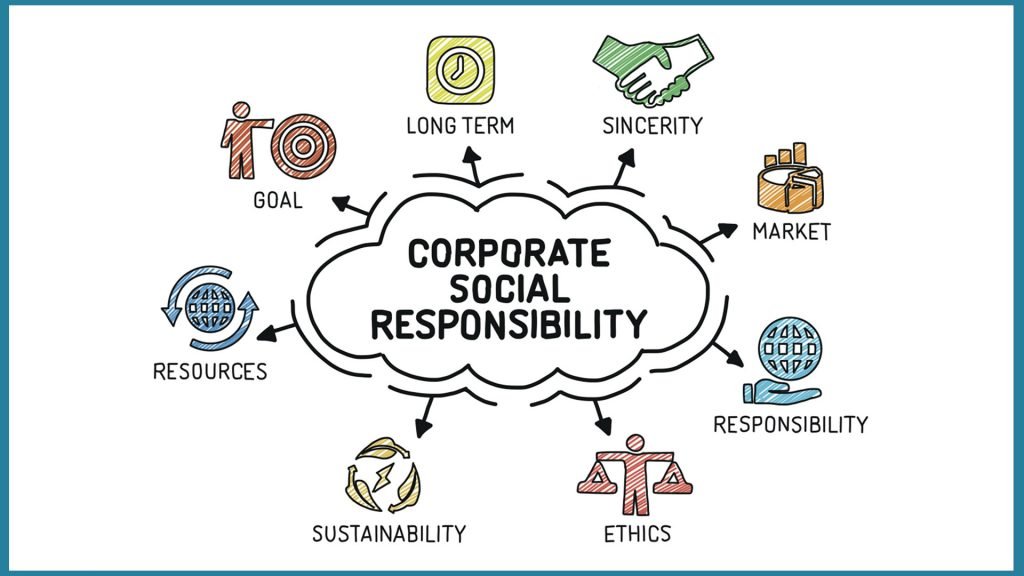In an era where consumers, employees, and investors demand more than just profits from businesses, Corporate Social Responsibility (CSR) has emerged as a cornerstone of modern corporate strategy. CSR is no longer a “nice-to-have” public relations tool—it’s a strategic necessity. Companies across the globe, from startups to multinational corporations, are integrating CSR into their core operations to build trust, enhance brand value, and contribute meaningfully to society and the environment.
This article explores the meaning of CSR, its key components, benefits, examples, and how companies can successfully implement effective CSR strategies in 2025 and beyond.
What Is CSR?
Corporate Social Responsibility (CSR) refers to a company’s voluntary commitment to operate in an economically, socially, and environmentally sustainable manner, while recognizing the interests of its stakeholders, including employees, customers, investors, communities, and the planet.
Rather than focusing solely on financial gain, socially responsible companies aim to balance profit with purpose, taking responsibility for the impact of their activities on society and the environment.
The Four Pillars of CSR
CSR typically rests on four main pillars:
1. Environmental Responsibility
This involves adopting sustainable practices to reduce a company’s environmental footprint. Examples include:
- Reducing carbon emissions
- Switching to renewable energy
- Minimizing waste and promoting recycling
- Sustainable sourcing and production
2. Social Responsibility
This focuses on contributing positively to society. Key actions may include:
- Supporting community development
- Promoting diversity, equity, and inclusion (DEI)
- Donating to charities and non-profits
- Fair labor practices and employee welfare
3. Ethical Responsibility
Companies must operate with integrity, transparency, and fairness in all aspects of business. This includes:
- Anti-corruption measures
- Ethical supply chains
- Honest marketing and data protection
- Corporate governance standards
4. Economic Responsibility
This pillar emphasizes long-term value creation, not just for shareholders, but for all stakeholders. It includes:
- Ethical investments
- Sustainable business models
- Profit-sharing programs
- Creating job opportunities and economic growth
Why CSR Matters in 2025
In today’s interconnected world, stakeholders are more informed and socially aware than ever. CSR is critical for several reasons:
1. Enhancing Brand Reputation
Consumers prefer brands that align with their values. A strong CSR strategy builds brand loyalty and public trust, which can directly influence buying decisions.
2. Attracting and Retaining Talent
Employees, especially Millennials and Gen Z, are drawn to companies that have a clear social mission. CSR improves employee morale, engagement, and retention.
3. Investor Appeal
Sustainable and ethical companies are increasingly attractive to ESG (Environmental, Social, Governance) investors, leading to better access to capital.
4. Risk Management
Proactive CSR efforts help companies avoid legal issues, regulatory fines, and public backlash, all of which can result from poor environmental or social practices.
5. Competitive Advantage
Companies that lead in CSR often differentiate themselves from competitors, opening up new markets, partnerships, and customer segments.
Real-World Examples of CSR in Action
Unilever
Unilever integrates sustainability into every part of its value chain. Through its “Sustainable Living Plan,” the company has reduced waste, lowered carbon emissions, and developed eco-friendly products—all while maintaining profitability.
Patagonia
The outdoor clothing brand is a pioneer in environmental activism. Patagonia donates a portion of its profits to environmental causes and encourages customers to repair, reuse, or recycle products rather than replace them.
Microsoft
Microsoft’s CSR strategy focuses on carbon neutrality, ethical AI development, digital inclusion, and employee volunteerism. It has pledged to be carbon negative by 2030.
How to Build an Effective CSR Strategy
Implementing a successful CSR program involves more than writing a mission statement. Here’s a step-by-step guide:
1. Define Clear CSR Goals
Align CSR objectives with the company’s core mission. Goals should be specific, measurable, and relevant to your industry and stakeholders.
2. Engage Stakeholders
Talk to employees, customers, suppliers, and communities to understand their expectations and concerns. CSR should be collaborative, not top-down.
3. Integrate CSR into Business Strategy
CSR should not be a separate initiative. It must be woven into operations, product development, HR policies, and supply chains.
4. Measure Impact
Use KPIs (Key Performance Indicators) and sustainability reports to track progress and remain accountable.
5. Communicate Transparently
Regularly share your CSR achievements and challenges through sustainability reports, social media, or your company website. Transparency fosters trust.
The Future of CSR: Trends to Watch
As CSR continues to evolve, several key trends are shaping its future:
- Climate Action as a Business Priority: Companies are expected to set science-based targets to fight climate change.
- DEI Beyond Compliance: Diversity, Equity, and Inclusion are now seen as competitive advantages, not just checkboxes.
- AI and Ethical Tech: The rise of AI demands a stronger focus on ethical technology, data privacy, and algorithmic fairness.
- Circular Economy Models: Businesses are moving toward models that emphasize reuse and sustainability, minimizing waste across product lifecycles.
Conclusion
Corporate Social Responsibility is no longer optional—it’s a defining factor for long-term success. In 2025 and beyond, CSR will continue to reshape how businesses interact with society, the environment, and their own people. Companies that embrace CSR as a strategic priority, rather than an afterthought, will not only thrive in competitive markets but also make meaningful contributions to a better world.
CSR isn’t just good for business—it’s good for humanity.










